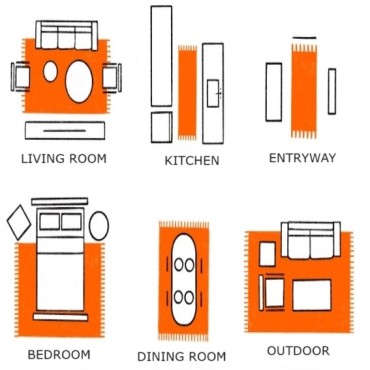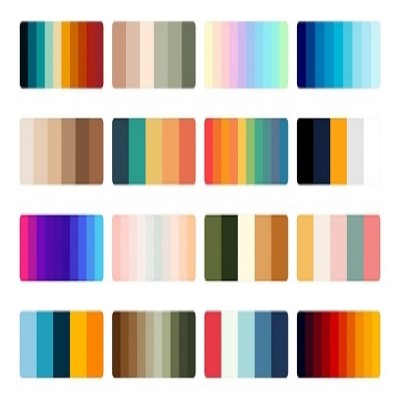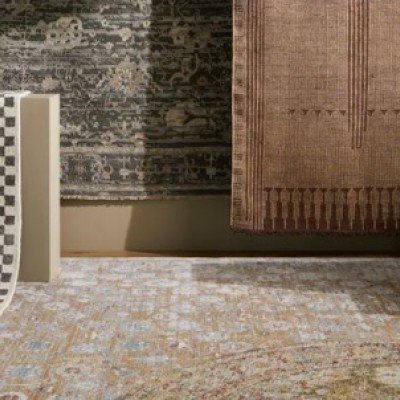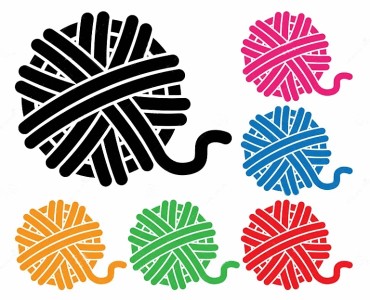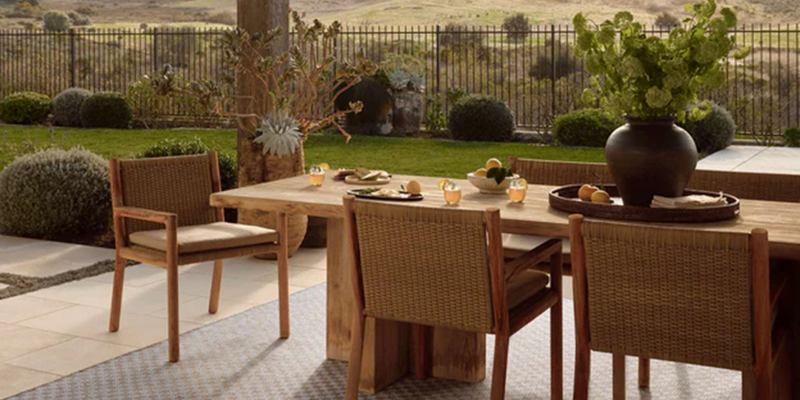
Using area rugs to create different zones in a room is a fantastic way to maximize space, add visual interest, and enhance the functionality of your living areas. Whether you want to delineate a seating area in a large living room, create a cozy reading nook in a bedroom, or define a dining space within an open-plan area, strategically placing rugs can help achieve these goals. In this guide, we'll explore various tips and techniques for using area rugs to create distinct zones in a room.
1. Define the Purpose of Each Zone:
Before selecting and placing area rugs, it's essential to clarify the purpose of each zone within the room. Are you aiming to create a conversation area, a dining space, a workspace, or a relaxation zone? Understanding the function of each zone will guide your rug selection and placement decisions.
2. Choose appropriate rug sizes:
The size of the rug plays a crucial role in defining the boundaries of a zone. Here are some general guidelines:
Living Room Seating Area:
For a seating arrangement such as a sofa and chairs, choose a rug large enough to accommodate all the furniture. Ideally, the front legs of the furniture should rest on the rug, creating a cohesive grouping.
Dining Area:
In a dining space, select a rug that extends beyond the edges of the dining table when the chairs are pulled out. This ensures that the chairs remain on the rug even when people are seated.
Bedroom Nook:
For a reading or lounging area in a bedroom, opt for a rug that fits beneath the key furniture pieces, such as a reading chair or a chaise lounge.
Work Zone:
In a home office or study area, choose a rug that comfortably fits under the desk and chair, providing a soft and defined work surface.
3. Coordinate Rug Colors and Patterns:
When selecting rugs for different zones, consider the room's overall color scheme and decor style. While it's not necessary for all rugs to match perfectly, coordinating colors and patterns can create a cohesive look. For example:
In a room with neutral walls and furniture, a rug with a pop of color can serve as the focal point.
If the room already features bold patterns or textures, opt for a solid-colored rug to balance the visual impact.
Use rugs with similar hues or complementary colors in adjacent zones to maintain harmony and flow throughout the space.
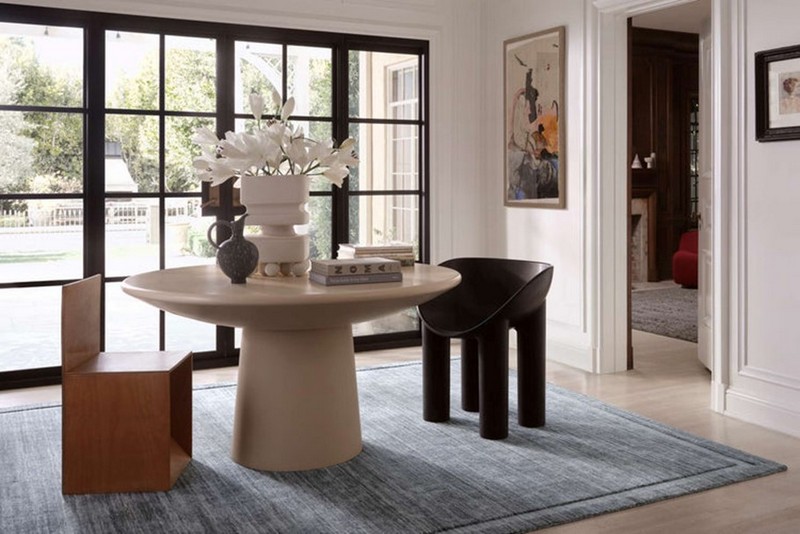
4. Layer Rugs for Visual Interest:
Layering rugs is a creative way to define zones while adding depth and texture to the room. Here are some layering ideas:
Large Rug with Small Accent Rug:
Use a larger rug as the base, covering the room's central area. Then, layer a smaller accent rug on top to highlight a specific zone, such as a reading corner or coffee table area.
Multiple Rugs in Open-Plan Spaces:
In open-plan layouts, use different rugs to delineate various functional areas. For instance, place a rug under the dining table, another one in the living seating area, and a third rug in a workspace or entryway zone.
Mix textures and materials:
experiment with combining rugs of different textures, such as a plush rug layered over a natural fiber rug. This adds visual interest and tactile appeal to the room.
5. Use Rugs to Create Pathways:
In addition to defining zones, rugs can also be used to create pathways within a room, especially in larger or multifunctional spaces. Consider these tips:
Connect Zones with Runners:
Use narrow runner rugs to connect adjacent zones, such as linking a living area to a dining space or a bedroom to a sitting area.
Guide Traffic Flow:
Place rugs strategically to guide traffic flow and create designated walking paths, particularly in open-plan layouts where delineating different areas is essential.
6. Experiment with Shapes and Placement:
While rectangular rugs are most common, don't be afraid to explore different shapes and placements to achieve the desired zone definition:
Circular Rugs
A circular rug can be an excellent choice for creating a cozy conversation area or highlighting a round dining table.
Irregular Shapes:
Consider rugs with irregular shapes, such as cowhide rugs or Moroccan-style rugs, to add a touch of uniqueness to specific zones.
Diagonal Placement:
Experiment with placing rugs diagonally to add visual interest and break away from traditional square or rectangular orientations.
7. Consider Rug Pads for Stability:
To ensure that your rugs stay in place and provide a comfortable surface, especially in high-traffic areas, consider using rug pads. Rug pads not only prevent slippage, but they also extend the life of your rugs by reducing wear and tear.
8. Maintain Balance and Proportion:
When creating different zones with area rugs, it's essential to maintain balance and proportion within the room. Avoid overcrowding a space with too many rugs or choosing oversized rugs that overwhelm smaller areas. Keep in mind the scale of the furniture and the overall layout to achieve a harmonious look.
9. Accessorize according to zones:
Once you've defined zones with area rugs, complement each zone with appropriate accessories to enhance its functionality and aesthetics.
Living Areas:
Add throw pillows, blankets, and coffee table decor to cozy seating areas defined by rugs.
Dining Zones:
Coordinate table linens, centerpieces, and lighting fixtures to complement the rug and create a welcoming dining atmosphere.
Workspace:
Incorporate desk organizers, task lighting, and comfortable seating to optimize productivity and comfort in rug-defined work zones.
10. Regular Maintenance and Cleaning
To maintain the beauty and functionality of your area rugs, follow a regular cleaning and maintenance routine. Vacuum rugs regularly to remove dust and debris; spot clean spills promptly; and consider professional cleaning for deeper maintenance.
Conclusion
At Rugs Town, using area rugs to create different zones in a room necessitates thoughtful planning, consideration of functionality and aesthetics, and attention to detail. You choosing appropriate rug sizes, coordinating colors and patterns, layering rugs for visual interest, creating pathways, experimenting with shapes, and accessorizing accordingly, you can transform your space into a well-defined, visually appealing, and functional environment.
